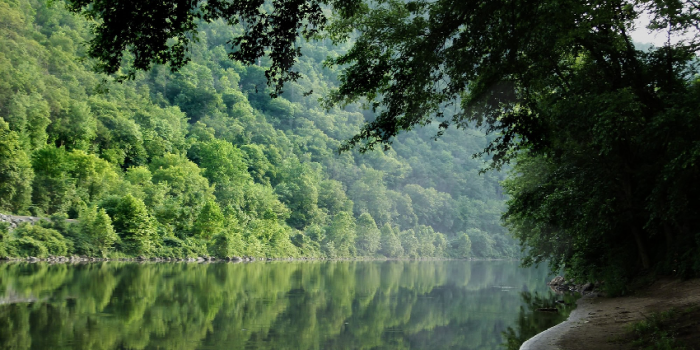
Types of forests and their characteristics
The jungle, also known by the names of tropical rainforest or jungle, is home to the main biomass of the entire Earth, with the flora and fauna of the jungle being the ones that present the greatest range of variety in species. In addition, it is structured in several levels of height.
If you want to discover the different types of forests that exist, do not miss this Green Ecology article in which we explain in detail what forests are and each of the types that exist according to different classifications.
What are the jungle and its general characteristics
The jungle is a bioclimatic landscape that presents a large amount of rainfall, abundant vegetation, and a warm climate, with an organization established at different levels of altitude. But what are the jungles like? Among its general characteristics are:
- Its location occurs in different latitudes, abounding in the areas of the tropics of Cancer and Capricorn.
- These occupy 6% of the entire surface of the planet.
- They have abundant rainfall, with rainfall between 1,500 and 2,000 mm, so necessary to sustain a large amount of existing plant mass. In addition, humidity favors the decomposition of organic matter present in the soil. If we get closer to the equator, up to 3,000 mm per year can occur.
- They present an abundant hydrography thanks to the constant rains.
- The temperature of the forest located in the tropical fringe ranges between 27 ºC and 29 ºC. However, if we go above 400 meters in height or at subtropical latitudes it decreases to 22 ºC. Also if we find mountain forests or also called altitude, it can descend a little more to 17 ºC.
- The vegetation of the jungle and the animals of the jungle represent two-thirds of the total biodiversity existing on the planet, taking into account that there are still many species to be identified and discovered. Here you can learn more about what animals live in the rainforest.
- They are great generators of oxygen, in addition to working as important ecological refuges, also for communities of human beings.
- Rainforests have a 4-layer structure: soil, understory, canopy, and emergent.
- It is seriously threatened by the logging industry, illegal mining, and intensive agriculture and livestock.
We encourage you to read these other Green Ecology articles about the jungle ecosystem and its characteristics and about the flora and fauna of the tropical jungle. Regarding the different types of forests, these are classified according to their altitude, humidity, and latitude and, below, we are going to see each of these types of classification.
Types of jungle according to altitude
These are the different types of forests according to the altitude at which they are:
- Basal or plain jungle: this is located between 0 and 1000 meters above sea level, so it usually floods, becoming swampy or resting territories as happens in the alluvial jungle.
- Mountain jungle: it can also receive the name of the cloud forest, and they are located at an altitude that ranges between 1,000 and 2,200 meters above sea level, it has very abundant biodiversity and moisture condensation occurs in them. There are also mountainous forests in the subtropical region. Although they are found at a lower altitude, between 500 and 1,300 meters above sea level.
- Gallery jungle: they are typical of the intertropical zones, surrounding humid areas. Such as lagoons and rivers of the plains of the Sabana. Here we tell you more about the Forest or gallery jungle: what it is, flora and fauna.
Types of jungle according to humidity
Jungles can also be classified according to the humidity they have:
- Super humid rainforest: in tropical forests, there is a precipitation band of about 2,000 mm per year and 4,000 mm. It tends to have rainy climates that make the foliage always green, although there can be periods of drought in which part of the foliage is lost, approximately 25%, which ends up recovering quickly.
- Humid jungle: in the dry season the foliage that is lost is in the range between 25% and 50%, so the loss is partial. Rainfall for the subtropical forest ranges between 1,000 and 2,000 mm per year and in the tropical forest between 2,000 and 3,000 mm per year.
- Sub-humid forest: also called dry forest in which there are both dry and humid periods. Whereby all the foliage is lost in dry seasons. In this area, the diversity is lower, with the same species of arboreal type predominant.
Types of jungle according to latitude
If we classify them according to their latitude, the different types of the jungle are:
- Equatorial jungle: presents an average of 35 ºC, with impressive biological characteristics. The Amazon or the Congo jungle are equatorial jungles.
- Tropical jungle: with temperatures higher than 24ºC, as an annual average. Its climate, in addition to being warm, is humid thanks to the trade winds coming from the north and south that converge.
- Subtropical jungle: in these jungles, there are average annual temperatures between 18 and 24 º C. With rather cold winters, and warm summers.
- Temperate jungle: or also called laurel forest, it presents abundant humidity and cold climates.
- Subpolar jungle: also called subpolar rain forest or Magellanic forest. This jungle is located in glacial lakes and fjord shores, they present great biodiversity and evergreen vegetation.
Forest names of the world
Among the lushest and important forests in the world are the Congo Jungle, located in Africa with approximately 700,000 km2, and the Amazon Jungle, located in the heart of South America with an approximate extension of 5,500,000 km2. Other names of important forests are:
- Harapan jungle in Indonesia.
- Rainforests of Hawaii in the United States.
- Yanoda Jungle in China.
- Daintree Rainforest in Australia.



